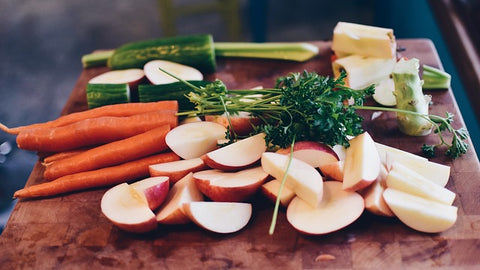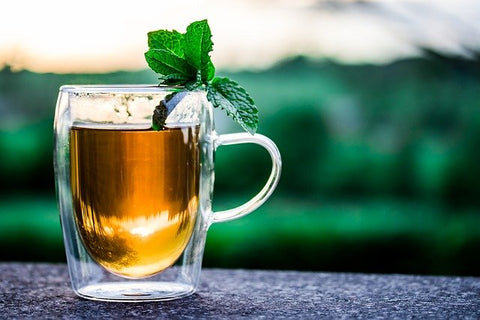Red
Red foods contain a number of antioxidants, including lycopene (tomatoes), anthocyanins (red berries) and ellagic acid (strawberries, raspberries and pomegranate). Lycopene is a pretty powerful antioxidant that can help reduce the risk of cancer and protect against heart disease.
Orange
Orange foods are high in carotenoids, including alpha-carotene and beta-carotene, which are responsible for the vibrant orange colour of foods such as pumpkin, sweet potato and carrots. The human body converts beta-carotene into vitamin A, which is important for healthy skin, a strong immune system, and good eye health and vision (see, grandma was right – eating your carrots really does help your eyes!).
Green
Green vegetables are some of the most nutritionally charged foods around, packed full of fibre, vitamins and minerals. Vegetables like spinach, broccoli, peas and kale contain lutein and zeaxanthin, which may help protect against age-related eye disease. Vegetables like broccoli, cabbage, Brussels sprouts, kale and pak choi are also sources of sulforaphane and glucosinolate, which may help protect against certain cancers and blood vessel damage (which can lead to heart attacks and stroke).
White/Brown
White fruits and vegetables can get their colour from anthoxanthins, which may reduce the risk of cardiovascular disease and arthritis. Banana and parsnip and are great sources of potassium, which is important for normal heart and muscle function, while cauliflower, turnip and cabbage contain sulforaphane, which is associated with fighting cancer, strengthening bone tissue, and maintaining healthy blood vessels.
The fibre in the skins of brown fruit and vegetables (such as potatoes, pears and mushrooms) helps maintain a healthy digestive tract and can reduce the risk of some types of cancer. Selenium – found in mushrooms – plays a key role in metabolism, supports the immune system and is an antioxidant. Pulses such as lentils and chickpeas have phytoestrogens that may help prevent hormone-related cancers.
Yellow
Like orange foods, yellow foods are rich in beta-carotene, a source of Vitamin A for the body. They also contain beta-cryptoxanthin – a powerful carotenoid with strong antioxidant properties. As well as links to cancer prevention, studies have shown that a small increase in your beta-cryptoxanthin intake can reduce your risk of developing inflammatory disorders, such as rheumatoid arthritis.



